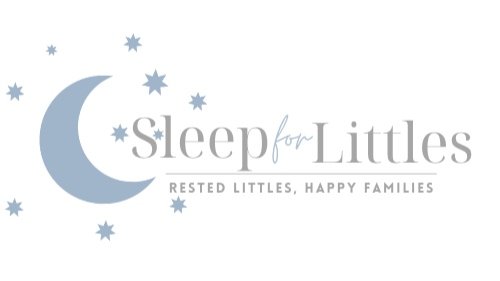How & When to Ditch the Pacifier
Pacifier use is a hot topic when it comes to babies and toddlers, especially when it comes to how it effects sleep. If you have a pacifier lover, you might be wondering, “How and when do I stop using the pacifier?” Or maybe you know in your heart of hearts that it’s time to stop using the pacifier and you’re looking for an extra boost of encouragement and step -by-step directions on how to do so.
In this blog post, I’m going to share with you all about pacifier use and how it affects your little one’s sleep PLUS some strategies for how you can ditch the paci!
When To Stop Using the Pacifier
Here Sleep for Littles, it is no secret that I am anti-pacifier once your child is 12 months old. I believe pacifiers do have a time and place and that is during the infant season only. There are different schools of thought regarding when to drop the pacifier. Some sleep professionals believe that after the newborn stage, the pacifier should be eliminated to help promote self-soothing. Other sleep professionals, like myself, find comfort in knowing that pacifier babies have significantly decreased risk of SIDS. However, if you’re questioning whether it is the right time to drop the pacifier, chances are, it probably is.
How the Pacifier Effects Sleep
When your child is sleeping during the night, they are going through different sleep cycles. Each cycle lasts around 90 minutes. During these sleep cycles, your child experiences different stages of sleep, namely REM (rapid eye movement, “dreaming”) and non-REM sleep (also known as “deep sleep”). Every time your child transitions from one sleep cycle to the next, they may experience a partial awakening. Children who rely on a pacifier to fall sleep and stay asleep will inevitably look for their pacifier every time they experience a partial awakening between sleep cycles.
Drowsiness is the very first stage of sleep, and a pacifier help babies and children become drowsy so that they can enter into the next stage of sleep. During deep sleep, it’s very common that the pacifier falls out of the child’s mouth leading them to wake up and looking for the pacifier to get them back to sleep when they enter the lighter phase of sleep. Rinse and repeat. All. Night. Long.
Strategies for How to Stop the Pacifier
If you have a baby (4-12 months old), you can’t communicate with your child using words. Instead, you need to commit to no more pacifier. If you have an older child, you can prep them beforehand using literature, videos or by having discussions explaining exactly how it will happen.
1. Cold Turkey Method
This is the most intense of the weaning methods. You throw all pacifiers in the garbage and your child will no longer have access to them.
2. Only During Sleep Method
Some families prefer to transition away from the pacifier slowly. If this thought resonates with you, this might be a method for you. Start by only allowing your child to have the pacifier for sleep only. In few weeks, start transitioning away from pacifier use during naps, then transition away from night sleep.
3. Snip the Tip Method
Every few days, snip the tip of the pacifier. Eventually, they will be unable to keep in their mouths. Once this happens, the pacifier tends to lose its appeal for most babies.
Commit to Consistency
When should I stop using the pacifier?” and “How should I stop using the pacifier?” are questions only you and your family can truly answer. Once you have chosen a strategy for dropping your child’s pacifier, it’s extremely important that you commit to using the strategy whole-heartedly and consistently. Be consistent with your plan and don’t back out of it when it feels hard.
If you’re unsure of whether or not its time, consider the points below when considering pacifier use:
If you are starting to doubt the pacifier, it’s time to drop it.
If your child is calling the shots, sleep will continue to be a disaster.
Children 6 months and older no longer need a pacifier and can self-soothe.
Children 4 months and older are capable of sleeping a full 11-12 hours at night.
Choose a strategy and plan for dropping the pacifier that works best for your family.
Commit to consistency when dropping the pacifier and move forward, pacifier-free.
